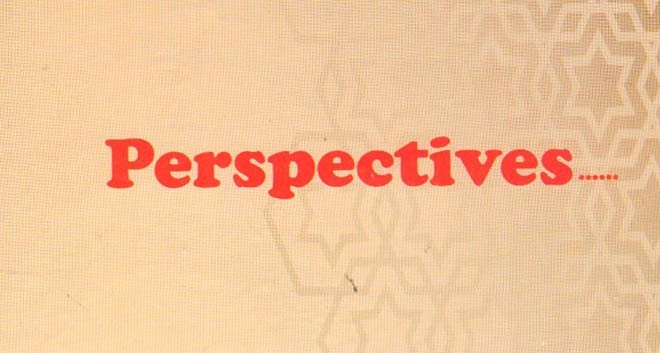
Historian and academic Dr Fatima Hussain’s book is a compilation of essays on Sufism and its symbiotic relationship with the philosophies of other religions

The book under review is a collection of writings of Dr Fatima Hussain. The first part of the book introduces the idea of Sufism, discusses the social role of Baba Farid and his shrine, the impact of Sufism on Sikhism; constructing the paradigm of religious conflict resolution through ‘The Heer -Waris Shah.’ There is also a chapter on Benazir Bhutto, "My Role Model" and Amrita Pritam, the "Doyen of Punjabi Literature".
A well known historian, who currently teaches at Delhi University, India, Dr Fatima Hussain also sheds intellectual light on the contemporary relevance of poet Munir Niazi. She also divulges the experience of teaching and writing History.
A section of this part of the book is dedicated to translations that include Shah Hussain’s Kafis and those of ‘Grateful Eyes -- A Short History’ by Hayatullah Ansari. Part II contains interviews and reviews.
Dr Hussain has many books and newspaper articles to her credit. These include ‘The War that wasn’t: The Sufi and the Sultan’; ‘The Palestine Question: A Historical Perspective’; ‘Sufism and Bhakti Movement: Contemporary Relevance’; and ‘Sufism Revisited’. Her books have been published both in India and Pakistan. The book under review is printed by Classic, Lahore.
Dr Hussain’s special area of research remains Sufism so she not only follows the message of love, she also becomes a peacenik herself and wants the world to follow the message of great Sufi saints who always cared for humanity and were duly respected by the followers of different religions of the world.
In the very introduction, she establishes the fact that the book is a "…collection of essays [that] serves as a unique guide to the study of Islamic mysticism, Sufism (tasawwuf)." She is clearly conscious as well as cautious in compiling the book lest the Sufist philosophy may be misused. Hence, she insists that "Tasawwuf should not be passed into service for advancing the imperialist agenda."
"A rentier state created a rentier culture," she states.
Dr Hussain is well aware of the ‘use and throw’ policy of the neo-imperialist forces. She talks of the US role in Pakistan’s involvement in Afghan jihad.
Discussing the impact of Sufism on Sikhism, she writes, "The advent of Islam and the rise of Sufism in Punjab led to a cultural and linguistic interaction between the two civilisations." According to her, Guru Nanak was born "when a new, composite culture and vitally transformed language had evolved in the soil." She believes whatever similarities there are between the Holy Quran and Adi Granth couldn’t be accidental.
"The first popular Sufi who had settled in Punjab was Data Ganj Baksh," she writes. "Khanqahs were the only places where people of different shades of opinion, professing different religions and speaking different languages, met." (P46)
She also finds similarities between Islam and Sikhism, "The architecture of Gurdwara is close to the architecture of our mosques and Sufi khanqahs." (P51)
On the role of Sufism in spreading the message of peace in South Asia, she says, "Sufism set the process of social reformation in South Asia. And Sufi khanqahs were the place for service towards humanity and peace." (P60)
In Heer Waris Shah, Dr Hussain believes there is a stated message of brotherhood and love, and it transcends the boundary of religion. "The popularity of Heer suggests that the people of Punjab resisted the domination of the higher languages of the ruling Muslim classes." (P67)
At another point, she notes, "Heer could be analysed from historical, sociological, mystical and artistic as well as literary angles." (P96)
One of the few Pakistan is who inspired her is the late Benazir Bhutto, so she calls her her role model.
Her critique of Fakhar Zaman’s novels is quite insightful, as she puts it, "His novels make a strong social and political statement which has taken the Punjabi novel to new heights of social and philosophical concern." (P103)
In the following paragraph, she goes, "The novels exemplify the schism within the writer…." She also calls Zaman’s writings as an "effortless fusion of the conscious and unconscious realm of experience [that] beautifully transcends the rational and demonstrates Zaman’s inclination towards psychological surrealism." (P104)
To her, he is an enigma and creates a genre of his own.
In her article on 1857, she highlights the atrocities committed by the British against the rebels. "…not only was the revolt against imperialism, it was also a struggle against the internal contradictions of Indian society and economy of that period," she writes, and then gives the example of the "indigenous bania, the money lender, [who] also faced the brunt of the revolt." (P121)
The book comes at a time when tension between India and Pakistan is escalating at the borders. It could play a positive role in this scenario by stressing on a similar cultural and intellectual past the two neighbouring countries are enjoined by.